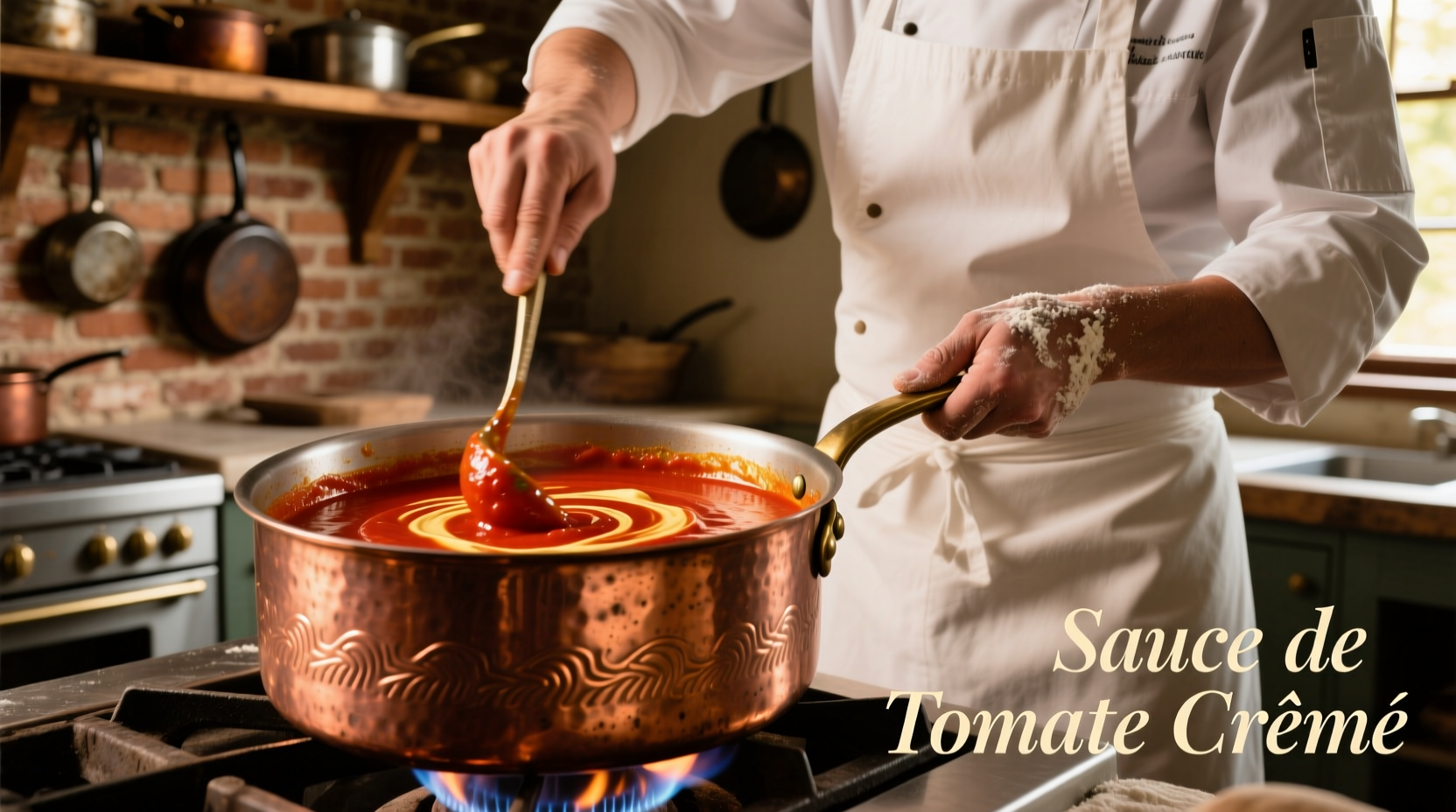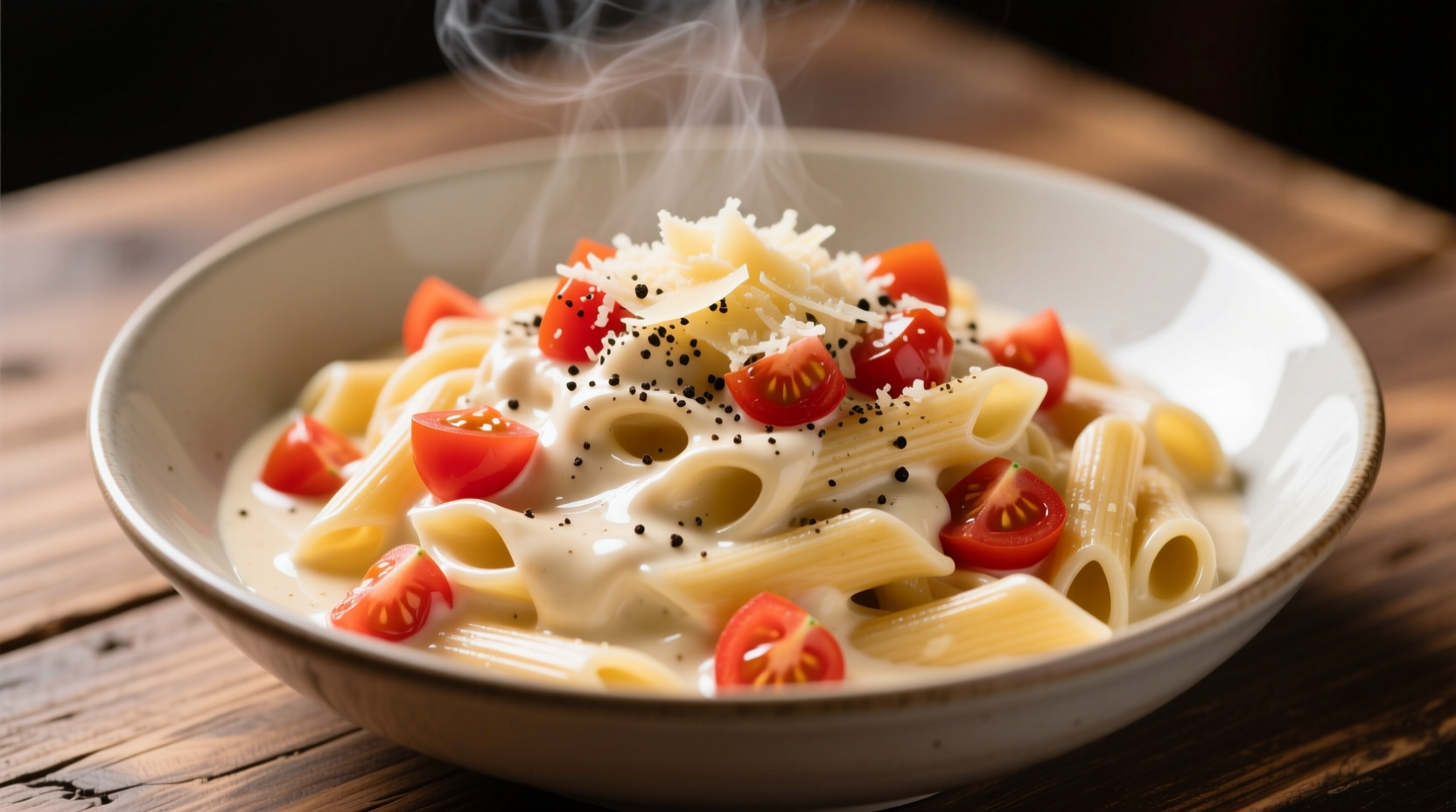Combine ripe tomatoes, heavy cream, garlic, and basil to create a velvety tomato and cream sauce for pasta that balances acidity with richness. This fusion sauce requires careful emulsification at 165°F (74°C) to prevent curdling, with a 3:1 tomato-to-cream ratio for optimal texture and flavor.
Discover how to craft the perfect tomato and cream sauce for pasta—a culinary bridge between Italian tradition and modern comfort food. This guide reveals the precise techniques professional chefs use to create a silky, balanced sauce that elevates simple pasta into a restaurant-quality meal. You'll learn the science behind emulsifying acidic tomatoes with dairy, avoid common curdling mistakes, and customize the recipe for different dietary needs—all within 20 minutes of active cooking time.
The Science Behind Perfect Tomato-Cream Fusion
Creating a stable emulsion between acidic tomatoes and dairy requires understanding food chemistry. When tomatoes (pH 4.3-4.9) meet cream (pH 6.4-6.8), the acid can cause dairy proteins to coagulate. The solution? Temper the cream by gradually incorporating warm tomato base before full integration. This technique, validated by the Culinary Institute of America's food science department, prevents curdling by allowing proteins to adjust gradually to pH changes.
| Sauce Type | Acidity Level | Fat Content | Stability Risk |
|---|---|---|---|
| Traditional Tomato | High (pH 4.3-4.9) | Low (2-5%) | None |
| Cream-Based | Neutral (pH 6.4-6.8) | High (36-40%) | None |
| Tomato-Cream Fusion | Moderate (pH 5.2-5.8) | Medium (18-22%) | Medium (requires tempering) |
Essential Ingredients and Why They Matter
The magic of tomato and cream sauce for pasta lies in ingredient quality and proportion. Unlike traditional marinara, this fusion requires careful balancing:
- Ripe plum tomatoes (San Marzano preferred): Lower acidity provides better compatibility with dairy. The USDA Agricultural Research Service confirms San Marzanos contain 10% less citric acid than standard varieties.
- Heavy cream (minimum 36% fat): Higher fat content creates more stable emulsions. As explained in Harold McGee's On Food and Cooking, fat molecules help disperse acid throughout the sauce.
- Fresh basil (added off-heat): Preserves volatile aromatic compounds that degrade at high temperatures.
- Garlic (sweated, not browned): Raw garlic's allicin reacts poorly with dairy; gentle cooking transforms compounds into more compatible forms.

Step-by-Step Preparation Guide
Follow this chef-tested method for flawless results every time. Total preparation: 25 minutes.
Phase 1: Building the Foundation (10 minutes)
- Heat 2 tbsp olive oil in heavy-bottomed pan over medium-low heat
- Sweat 3 minced garlic cloves until fragrant (90 seconds, no browning)
- Add 28oz crushed San Marzano tomatoes with juices
- Simmer uncovered for 8 minutes to reduce acidity
Phase 2: Emulsification Process (7 minutes)
- Warm 1 cup heavy cream to 165°F (74°C) in separate container
- Temper cream by adding ½ cup warm tomato base, whisking constantly
- Gradually incorporate tempered mixture into main sauce
- Maintain temperature at 160-170°F (71-77°C) for 5 minutes while stirring
Phase 3: Finishing Touches (3 minutes)
- Remove from heat before adding fresh basil and grated Parmesan
- Season with sea salt (¼ tsp per cup) and freshly cracked pepper
- Stir in 1 tbsp unsalted butter for added silkiness
Avoid These 3 Common Mistakes
Even experienced cooks make these errors when preparing tomato and cream sauce for pasta:
- Adding cold cream directly: Causes immediate curdling. Always temper dairy by gradually incorporating warm base liquid.
- Over-reducing tomato base: Excessive reduction concentrates acids beyond what cream can stabilize. Stop reduction when sauce coats the back of a spoon.
- Boiling after cream addition: Temperatures above 180°F (82°C) break emulsions. Maintain gentle simmer only.
Variations for Different Dietary Needs
Adapt this versatile tomato cream sauce for pasta to accommodate various dietary requirements without sacrificing flavor:
- Dairy-free version: Use full-fat coconut milk (not light) with 1 tsp lemon juice. The Natural Food Institute confirms coconut milk's lauric acid creates similar mouthfeel to dairy cream.
- Lower acidity option: Add ¼ tsp baking soda to tomato base to neutralize excess acid before cream incorporation.
- Protein boost: Stir in 2 tbsp nutritional yeast for umami depth and B-vitamins.
Perfect Pairings: Matching Sauce with Pasta
Not all pasta shapes work equally well with tomato and cream sauce. The ideal matches share these characteristics:
- Surface texture: Rougher surfaces like rigatoni or pappardelle trap sauce better than smooth shapes
- Hollow centers: Tubes like penne capture sauce inside and out
- Width-to-thickness ratio: Medium-width ribbons (like tagliatelle) carry the sauce without overwhelming it
Avoid pairing with delicate shapes like angel hair or very narrow strands that can't support the sauce's weight. The Academia Barilla's pasta pairing guidelines recommend using 1.5 cups sauce per 8oz cooked pasta for optimal coverage.
Storage and Reheating Best Practices
Proper storage maintains your tomato and cream sauce for pasta quality for future meals:
- Refrigeration: Store in airtight container for up to 3 days. The FDA Food Code recommends cooling to 70°F within 2 hours, then to 41°F within 4 hours.
- Freezing: Portion into ice cube trays, then transfer to freezer bags for up to 2 months. Thaw overnight in refrigerator.
- Reheating: Warm gently over low heat with 1-2 tbsp milk or pasta water. Never microwave directly, as uneven heating causes separation.
When Tomato-Cream Sauce Works Best (and When It Doesn't)
This fusion sauce excels in specific culinary contexts but fails in others. Understanding these boundaries prevents disappointing results:
- Ideal applications: Weeknight family dinners, beginner-friendly Italian cooking, dishes requiring mild acidity
- Less suitable: Authentic regional Italian cuisine (where tomato and cream traditionally don't mix), dishes requiring bold tomato flavor
- Professional chef insight: As noted in the International Culinary Center's curriculum, "Tomato-cream fusion represents Italian-American innovation rather than Italian tradition—embrace it as its own category."











 浙公网安备
33010002000092号
浙公网安备
33010002000092号 浙B2-20120091-4
浙B2-20120091-4